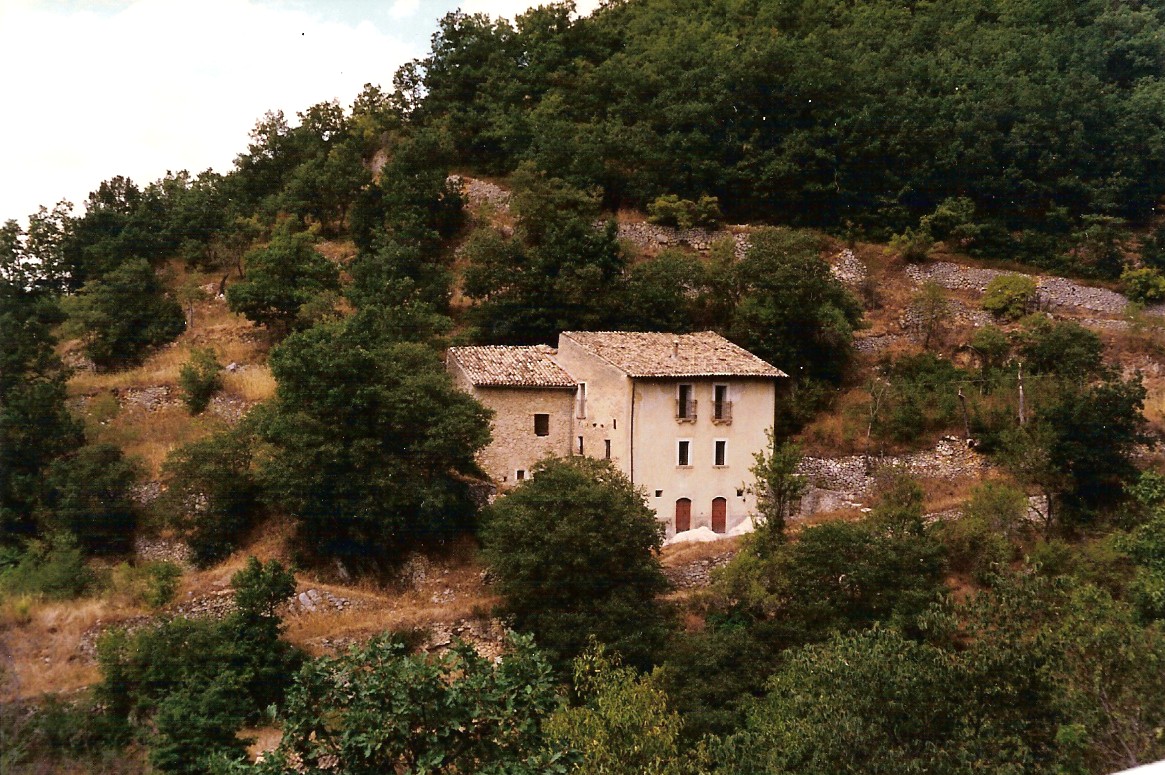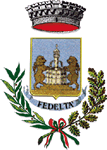
myCarosa.com
"Eppur, si muove!"
| |
| myCarosa Home |
| Carosa Academy |
| Carosa News |
| Carosa Creations |
| Carosa Families |
The Town of Fontecchio |
No doubt Fontecchio dates its origins to the pre-Roman Italic tribes, as it most assuredly sports evidence of Roman construction (although most of that has been built upon). We know the Romans, once the conquered and absorbed these tribes in 88 BC, immediately began making capital improvements. These civic endeavors included roads most likely along the prominent shepherd paths from the mountains to the coast. Unfortunately, most of this ancient archeology fell victim to the need for improved fortifications during the middle ages and to the erection of churches (at least the latter representing a common element of much of Roman Italy). Still, Fontecchio's well preserved medieval character, with its narrow cobbled stepped streets and stretches of walls and towers, immediately strikes the visitor upon approach. Moving toward the village, one cannot ignore the obvious feudal, military type structures: to the right is the low-arched Porta del Castello; from the first circle of fortress wall, a ramp leads up to just below the Porta dei Santi (the Saints’ Door) protected by a trap door and projecting parts mainly made up of a small arch on jutting corbels once used to combat attackers from above. Of particular artistic and architectural interest is also a series of fortified buildings, especially Palazzo Muzi and Palazzo Corvi that branch out from the tower towards the inhabited center preserving remains of an ancient era such as the Roman structure of a cistern situated under the internal courtyard of Palazzo Corvi and the corner tower of this impressive construction. Of particular interest, La Torre dell’Orologio (the Clock Tower) rings fifty times every evening in remembrance of the fifty days of siege which came to an end after a mortar attack on the leaders of the attackers by Marchioness Corvi. The clock is one of the oldest clocks constructed in Italy: confirmed by its Italian-style face which is divided into 6 hours and by the mechanism moved by weights and that only the hour hand moves. The religious monuments are also of great significance in primis that of S. Francis. Tradition has it that near the old XII century Church of St. Agnes, a Franciscan convent was built in 1300 whose foundation appears to be attributed to the Romanic portal Aquilan-style with carved capitals. In the early 1400's this old construction was enriched with a characteristic cloister with an elegant upper loggia with columns and capitals of various forms, which partly support round arches and partly the wooden architrave of the roofing. Other aspects which also deserve attention are the churches of: Santa Maria della Vittoria (previously the Church of St. Peter) that rises from the base of the columns of a roman temple, probably dedicated to Quirinus; and that of the Convent of Santa Maria at Graiano di San Pio which follows essential canons of the themes of the Jesuits of Vignola, such as the neo-fivehumdreds De Vitis summarizes with its central hall with lateral chapels and domed section. The tempera, canvas painting, "Madonna de Ambro", painted by an unknown artist, originates from this old convent. It shows particularly fine artistry and dates back to the mid-XIII century. It is presently in the National Museum of Abruzzo in L’Aquila. Of significant historical and artistic importance is the XIII century fountain, symbol of the town and centrally represented in Fontecchio's Coat of Arms. Constructed in the XIV century in line with the type of fountain typical of Viterbo, it has a polygonal basin at its base with fourteen faces divided by small pilasters. From its center rises a cylindrical shaft decorated by masks, acanthus leaf decorations adorning above them. Finally, a lovely gothic-style niche with six pointed arches crowned by a hexagonal spire tops the fountain. Important aspects which must not be omitted are: the XV century building which houses the old oven situated in the characteristic Piazza del Popolo; and the presence of numerous medieval shops. Also of historical, artistic and architectural value is the Collegiate Church of Santa Maria Assunta, better known as, Santa Maria del Ponte, situated on the left bank of the Aterno river in front of Tione. Its construction, by the historical Bonanni, dates back to the V-VI century. Unfortunately, at present it does not preserve its original structure of Marsican school, which was redone in the second half of the XII century and extended partly in the 1400's and partly in the 1600's. Inside, it has three naves with ogival arches, cross vaults and the old absidiole enclosed in another at the back. There are also beautiful frescos. The baptistry is also very interesting, with pointed arch. One of the two cupboards, i.e., the one on the left which is made of polychromatic terra cotta with small pilasters and architraves decorated with golden, ornamental montives is particularly interesting. The Church of St. Nicola da Bari also deserves to be mentioned: it has a single nave and its roof is supported by trusses. Built east of the Porta Castello (Castle Door) between "I Merli" and "Via delle Terre", its main altar which is built into the wall is divided into three Romanic style niches and an impressive fresco depicting the Madonna breast-feeding her Child. A few miles up the road from Fontecchio stands San Pio delle Camere (mentioned on another page), one of the most interesting castles in Italy. For a more complete history, try this link (much of the above, with some editing, comes from other pages on this site): http://www.sirentina.it/uncem/eng/fontecchio/index.htm - Christopher Carosa (created 7/21/2007) |
| NEW DESTINATIONS | ||
|
||


